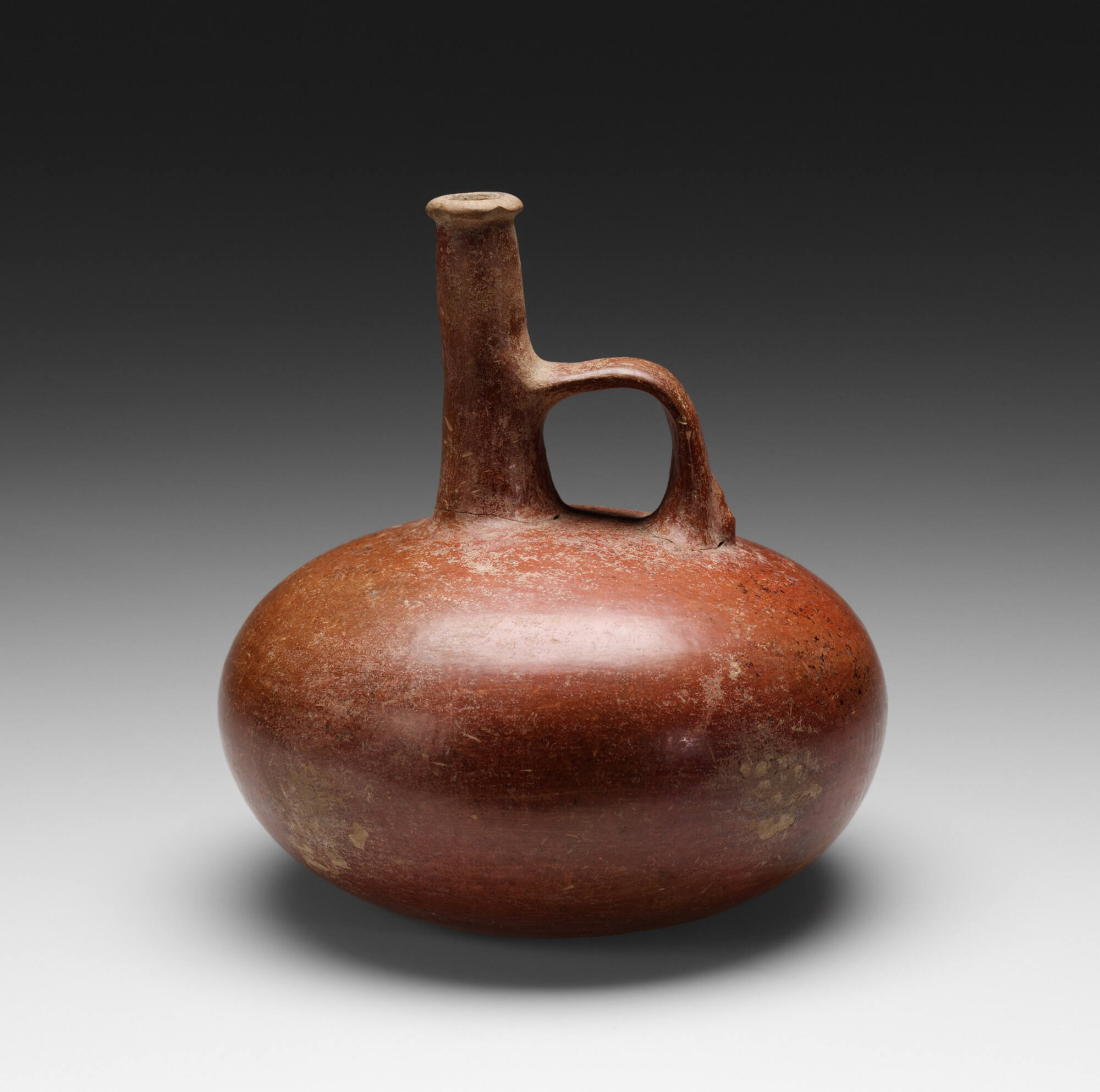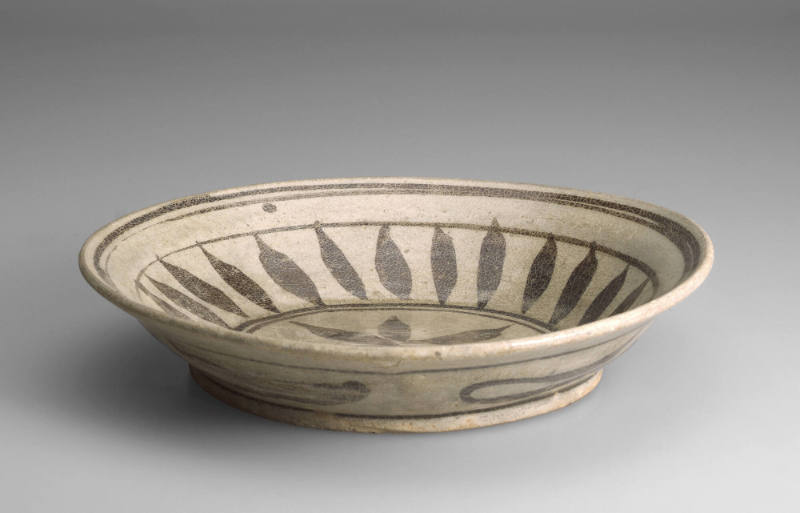
Object Details
Culture
Chorrera (Ecuador)
Date
1100–400 BCE
Medium
Earthenware
Dimensions
6 7/8 × 6 11/16 inches (17.5 × 17 cm)
Credit Line
Gift of Thomas Carroll, PhD 1951
Object
Number
2006.070.033
BRIEF DESCRIPTIONThis is a Chorrera bottle with a spout and a hole, suggesting that it was a whistle(…)
BRIEF DESCRIPTIONThis is a Chorrera bottle with a spout and a hole, suggesting that it was a whistle pot.WHERE WAS IT MADE?This bottle was made in what is now Ecuador.HOW WAS IT MADE?This bottle was likely hand-built with the coil method. In this method, a base is made by shaping clay into a flat disc. Then hand formed coils of clay, like ropes, are successively added to one another, building up the walls of the vessel. A tool such as a wooden paddle is used to smooth the sides both inside and out, leaving no trace of the coils. The spout and handle were made separately. The noisemaking character of whistle pots is an integral part of their function, and they are complicated to manufacture. Below you can see a diagram of a whistle pot.Slip was applied to the vessel to give it the red-orange color. Slip is made by mixing different-colored clays or ground mineral pigments with water. Once the slip dried, the surface of the bottle was burnished using a smooth object such as a stone or piece of bone. Finally, the finished bottle was fired in an earthen pit.HOW WAS IT USED?Bottles like this one may have been used to carry and serve liquids, since the narrow-necked shape would have reduced losses from accidental spills and evaporation. Although water is vital in desert environments such as those found in many parts of the Andes, recent analyses of residues from Peruvian bottles and jars suggest that most of them were used to serve corn (maize) beer or chicha. Chicha was both an everyday beverage, made in households for family consumption, and an essential element in ritual and social interactions.WHY DOES IT LOOK LIKE THIS?The form of the bottle may have helped to prevent liquid stored inside from spilling and evaporating too quickly.A small hole at the base of the bridge handle indicates that the vessel also functioned as a whistle pot. Whistle pots get their name from the sound they make when air is blown into them or when liquids move around inside them, for example from one side to another in the case of a double-chambered whistling pot. Whistling sounds are associated with rainfall and renewal–an important theme for agricultural people living in the barren desert of coastal Peru. The sounds produced by this whistle pot and other such instruments were used to open connections to the spirit world. Music served to invoke benign guardian spirits. After the Conquest, Europeans attempted to ban musical instruments such as flutes in order to suppress such contact with spirits.To see other whistle pots in the Johnson Museum’s collection, search for object numbers 69.182, 80.029.004, 2006.070.022, 2006.070.026, 2006.070.040, and 2006.070.397 in the keyword search box. These pots were not exclusive to one pre-Columbian cultural group or one period of time, but were made at different times in different places.ABOUT THE CHORRERA CULTURE:The Chorrera culture’s extended sphere of influence incorporated all three major Ecuadorian ecological zones: the coast, sierra (mountains), and Amazonia. While the Chorrera culture had its origins in the earlier Machalilla culture of the coast, certain aspects of its ceramic technology may have been influenced by the Ocós culture of Mesoamerica. The Chorrera people lived in small communities of 100-120 people, which seem to have supported craft specialists despite their small size. Fishing and farming were distinct occupations. The economy of the Chorrera people was based on farming, hunting and gathering. Trade along rivers and over the sea, especially trade in valuable stones such as lapiz lazuli, obsidian, and rock crystal, played an important role in the florescence of this culture. The highly burnished redware ceramics were decorated with black resist decoration, and feature an assortment of naturalistic animals and stylized human figures. Whistling bottles make their appearance during this period. The first cultural horizon in Ecuador to be widespread over a relatively large geographic region, the Chorrera people laid down a common cultural foundation upon which later cultures were built.












